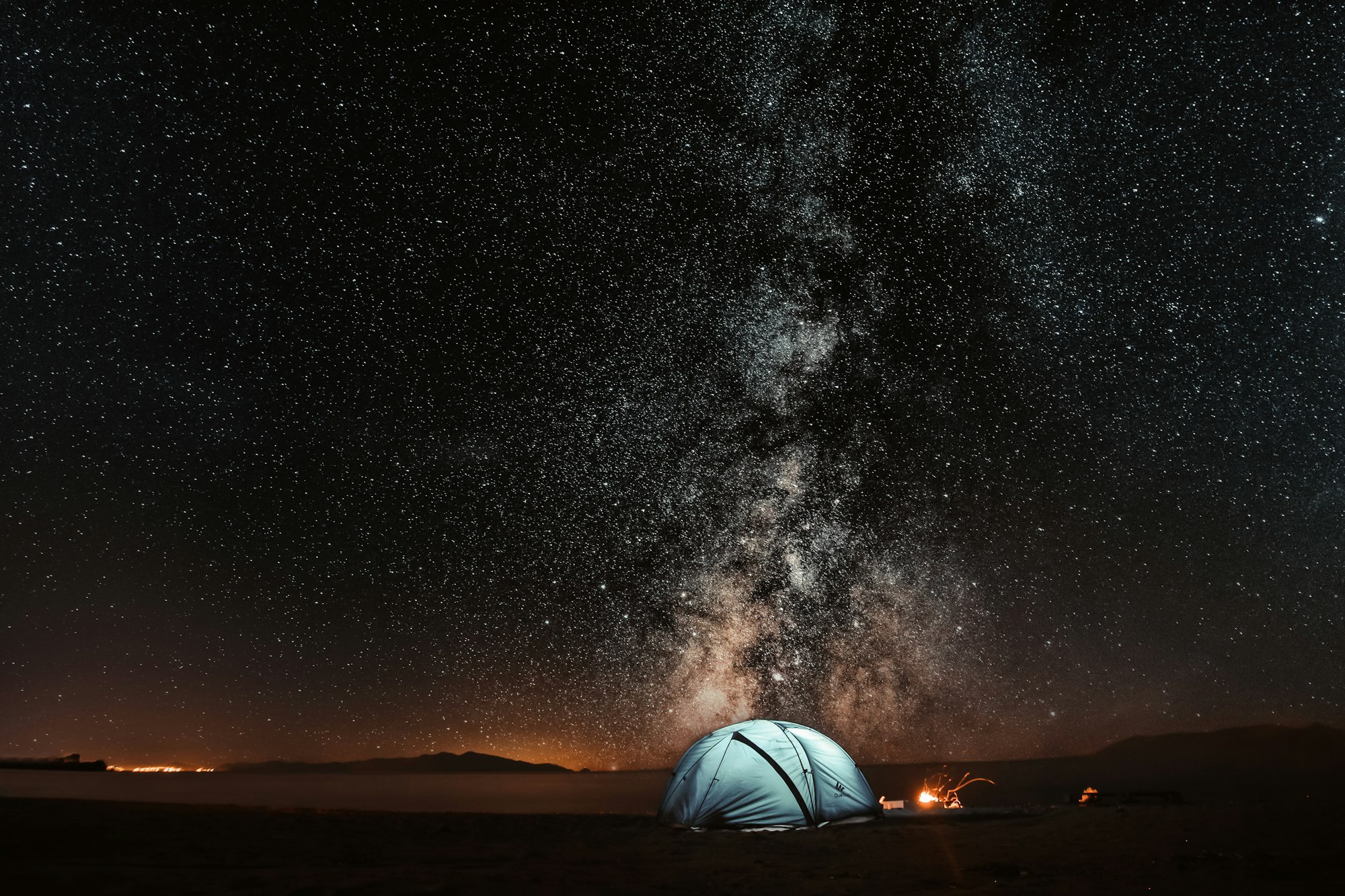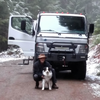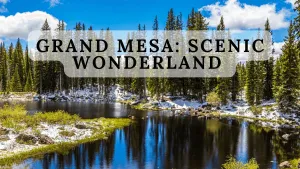Introduction
If you are looking for a unique and unforgettable adventure in Colorado, you should definitely visit Grand Mesa. This unique natural wonder is the largest flat-top mountain in the world, covering hundreds of square miles and rising over 11,000 feet above sea level. Grand Mesa offers a variety of activities and attractions for all seasons and interests, from hiking and fishing to skiing and snowmobiling. In this blog post, I will give you a detailed guide to Grand Mesa, including its history, geography, wildlife, and things to do. Here is the table of contents for this post:
- History of Grand Mesa
- Geography of Grand Mesa
- Wildlife of Grand Mesa
- Things to Do on Grand Mesa
- How to Get to Grand Mesa
- Where to Stay on Grand Mesa
History of Grand Mesa
Grand Mesa has a long and fascinating history that dates back millions of years. The mesa was formed by volcanic activity that created a thick layer of hard basalt rock on top of softer layers of shale and sandstone. Over time, the Colorado and Gunnison Rivers eroded the softer layers, creating steep cliffs and canyons around the mesa. The top layer of basalt protected the mesa from further erosion, resulting in a flat and expansive plateau.
The first humans to inhabit the area were the Fremont people, who hunted and farmed the fertile soil between 200 and 1300 A.D. They left behind petroglyphs and pictographs that can still be seen today. Later, the Ute people occupied the region until they were forced to relocate by the US government in the late 19th century.
The first European explorers to visit Grand Mesa were Spanish conquistadors in the 16th century, who named it "Mesa de las Vacas" (Table of Cows) because of the abundant wildlife they saw. In the 19th century, pioneers like Kit Carson and John C. Fremont traveled through the area, but it was so rugged and remote that it was one of the last places in the US to be settled by American frontiersmen.
Today, Grand Mesa is part of the Grand Mesa National Forest, which was established in 1892 as one of the first national forests in the country. The forest covers over 800 square miles and includes more than 300 lakes, streams, and reservoirs.
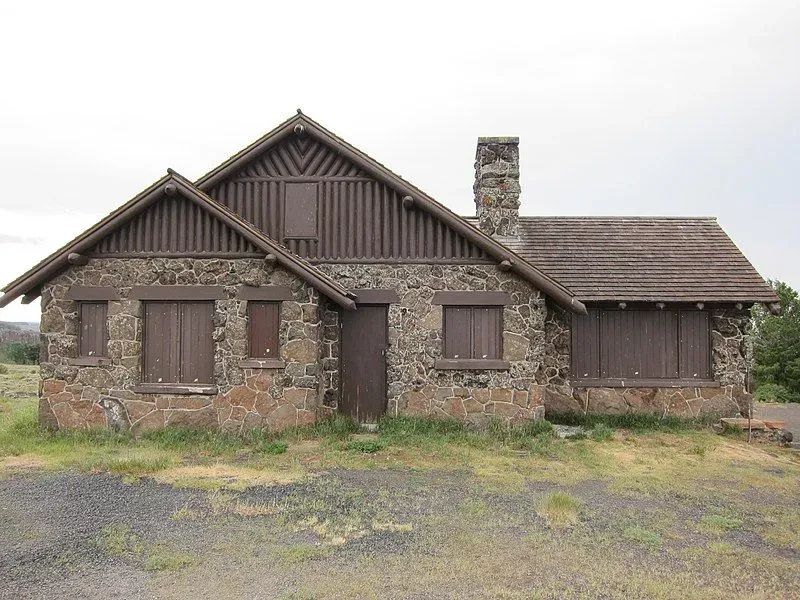
Geography of Grand Mesa
Grand Mesa is a geological marvel that spans about 40 miles east of Grand Junction between the Colorado and Gunnison Rivers. It covers an area of about 500 square miles, making it larger than some US states. It has an average elevation of about 10,000 feet, with its highest point being Crater Peak at 11,333 feet.
Grand Mesa is divided into two sections by a narrow ridge called Crag Crest. The north section is higher and more rugged than the south section, which is more gentle and rolling. The mesa is surrounded by deep valleys and canyons that offer spectacular views of the surrounding landscape.
One of the most distinctive features of Grand Mesa is its abundance of water. The mesa has more than 300 lakes, ponds, and reservoirs that are fed by snowmelt and streams. Some of the largest and most popular lakes are Island Lake, Eggleston Lake, Baron Lake, Ward Lake, and Cobbett Lake. The lakes are home to various species of fish, such as trout, salmon, perch, and bass.
Another notable feature of Grand Mesa is its diverse vegetation. The mesa supports several ecosystems, from alpine tundra and spruce-fir forests to aspen groves and meadows. The mesa is especially beautiful in autumn when the aspen trees turn golden yellow and contrast with the evergreens.
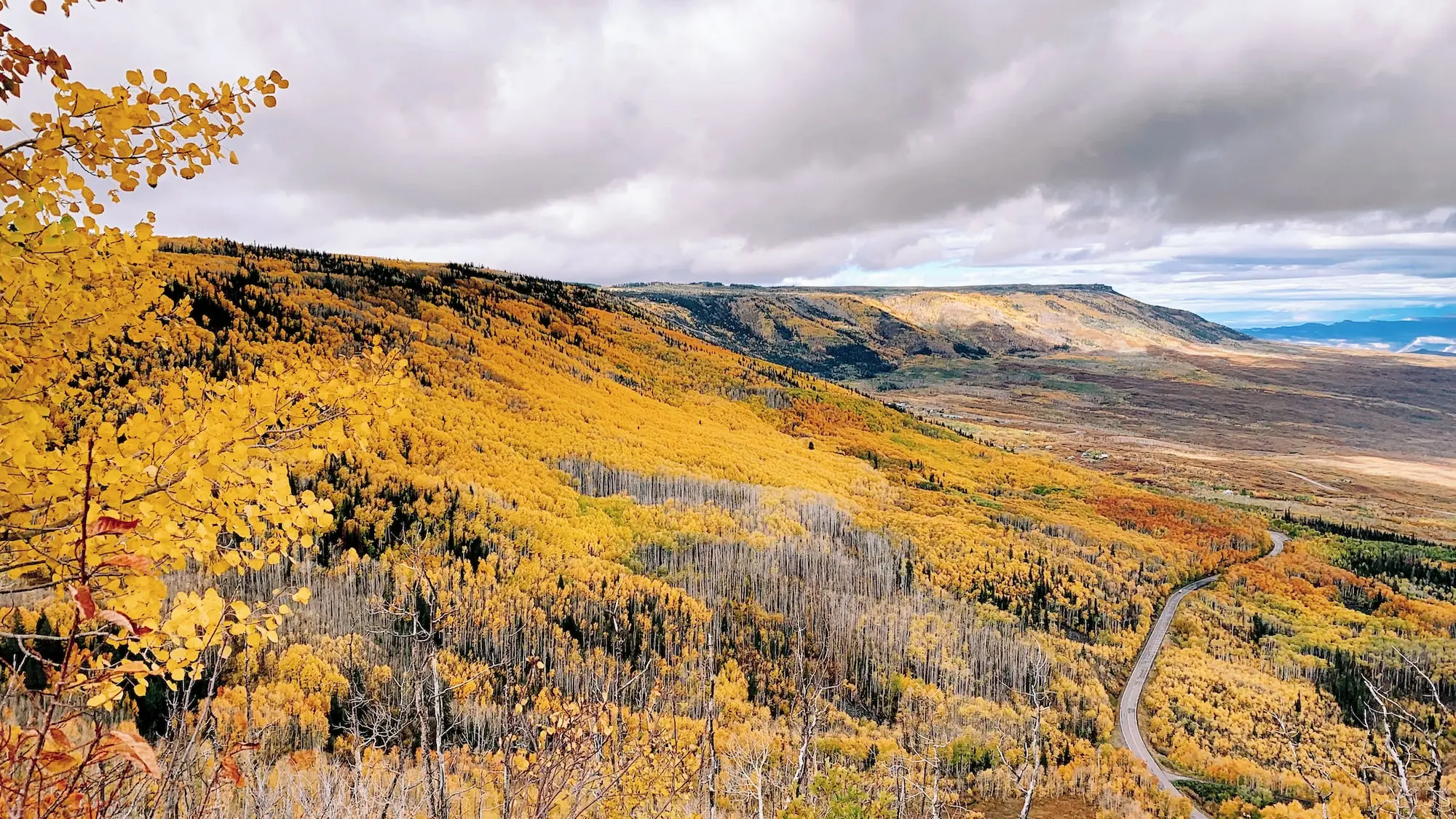
Wildlife of Grand Mesa
Hi everyone! Today I want to share with you some amazing facts about the wildlife of Grand Mesa. Grand Mesa is a large flat-topped mountain in western Colorado that is home to more than 300 lakes and ponds. It is also a habitat for many different animals, such as elk, deer, moose, black bears, mountain lions, coyotes, foxes, beavers, marmots, squirrels, chipmunks, and many more. Some of these animals are rare or endangered, such as the lynx and the boreal toad. Grand Mesa is a great place to observe and appreciate the diversity and beauty of nature. If you ever visit Grand Mesa, make sure to respect the wildlife and follow the rules of the park
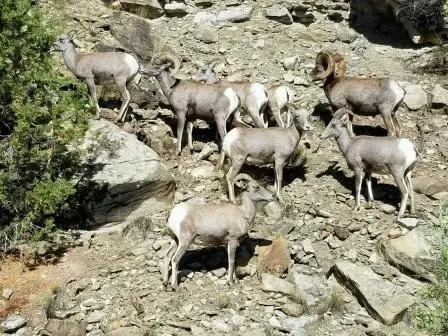
Things To Do
If you're looking for a fun and scenic getaway, Grand Mesa is the place to be! Grand Mesa is the largest flat-topped mountain in the world, and it offers plenty of activities for all seasons and interests. Here are some of the things you can do on Grand Mesa:
- Hike or bike on the many trails that crisscross the mesa, and enjoy the stunning views of the valleys and lakes below.
- Fish or kayak on one of the 300 lakes that dot the mesa, and catch a glimpse of the wildlife that lives there.
- Ski or snowshoe on the powdery slopes of Powderhorn Mountain Resort, or explore the Nordic trails at Skyway and County Line.
- Camp or picnic at one of the many campgrounds or picnic areas on the mesa, and marvel at the starry night sky.
- Learn about the history and culture of the Mesa at the Grand Mesa Visitor Center, or visit one of the local towns like Cedaredge or Mesa.
Grand Mesa is a natural wonder that you don't want to miss. So pack your bags and head to Grand Mesa for an unforgettable adventure!
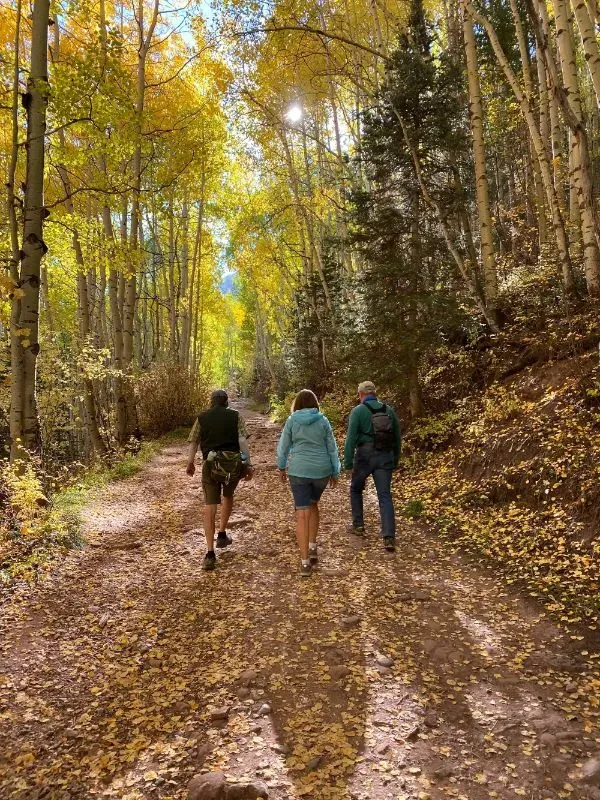
How to get there
- The Grand Mesa is located in western Colorado, about 40 miles east of Grand Junction. You can drive there from Denver in about four hours. The closest airport is Grand Junction where you can rent a car.
- The best way to explore the Grand Mesa is by taking the Grand Mesa Scenic and Historic Byway, which is a 63-mile route that winds through the Mesa and its surrounding forests and lakes. You can start from either Cedaredge or Mesa, depending on which direction you're coming from.
- Along the way, you'll find many scenic overlooks, picnic areas, hiking trails, fishing spots, and campgrounds. You can also stop by the Grand Mesa Visitor Center to learn more about the history and ecology of the area.
- The Grand Mesa is a year-round destination, but it's especially beautiful in the fall when the aspen trees turn golden. You can also enjoy skiing, snowshoeing, and snowmobiling in the winter. The video below shows some of the colors of the trees in the fall.
Where To Stay on Grand Mesa
There are many places where you can disperse camp on Grand Mesa. Here are a few of the most popular:
- Twin Lakes Dispersed Area: This area is located on the shores of Twin Lakes and offers stunning views of the surrounding mountains. It is a popular spot for hiking, fishing, and stargazing.
- Forest Road 1051B Dispersed Area: This area is located along Forest Road 1051B and offers stunning views of the surrounding mountains. It is a popular spot for hiking, fishing, and stargazing.
- Forest Road 126 Dispersed Area: This area is located along Forest Road 126 and offers stunning views of the surrounding mountains. It is a popular spot for hiking, fishing, and stargazing.
- Forest Road 70 Dispersed Area: This area is located along Forest Road 70 and offers stunning views of the surrounding mountains. It is a popular spot for hiking, fishing, and stargazing.
Dispersed camping is allowed in Grand Mesa National Forest, as long as you follow the rules and regulations. You can find more information about dispersed camping on the Grand Mesa National Forest website.
Here are a few of the rules and regulations for dispersed camping in Grand Mesa National Forest:
- You must camp at least 100 feet from any road or trail.
- You must camp in an area that is at least 100 feet from any water source.
- You must pack out all of your trash.
- You must not build a fire without a permit.
- You must not disturb any wildlife.
By following these rules and regulations, you can help to protect Grand Mesa National Forest and ensure that everyone can enjoy it for years to come.
The Grand Mesa is a must-see for anyone who loves nature and adventure. Don't miss this opportunity to experience one of Colorado's most amazing attractions!
Brent Conklin
